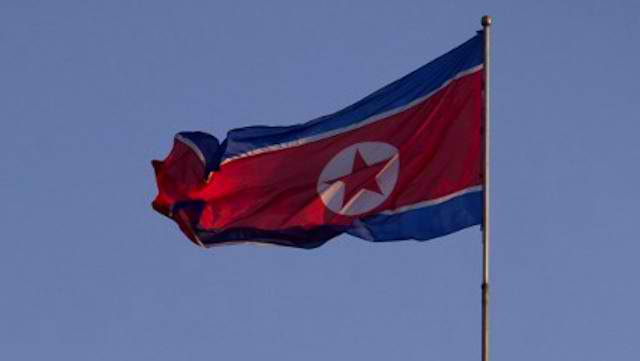SUMMARY
This is AI generated summarization, which may have errors. For context, always refer to the full article.

SEOUL, South Korea (3rd UPDATE) – North Korea’s military put its “strategic” rocket units on a war footing Tuesday, March 26, with a fresh threat to strike targets on the US mainland, Hawaii and Guam, as well as South Korea.
The move came as South Korea marked the third anniversary of the sinking of its naval vessel “Cheonan” by what Seoul insists was a North Korean submarine.
“All artillery troops including strategic rocket units and long-range artillery units are to be placed under class-A combat readiness,” the Korean People’s Army (KPA) supreme command said in a statement.
The units should be prepared to attack “all US military bases in the Asia-Pacific region, including the US mainland, Hawaii and Guam” and South Korea, said the statement carried by the Korean Central News Agency.
Despite a successful long-range rocket launch in December, most experts believe North Korea is years from developing a genuine inter-continental ballistic missile that could strike the mainland United States.
Hawaii and Guam would also be outside the range of its medium-range missiles, which would be capable, however, of striking US bases in South Korea and Japan. (READ: North Korea threatens US bases in Japan, Guam)
North Korean leader Kim Jong-Un has spent the past few weeks touring frontline military units, monitoring live fire artillery drills and making inflammatory speeches about wiping out the enemy.
Saber-rattling and displays of brinkmanship are nothing new in the region, but there are concerns that the current situation is so volatile that one accidental step could escalate into serious conflict.
“We are closely monitoring the situation. So far there has been no particular North Korean troop movement,” a South Korean defense ministry spokesman said. (READ: North Korea places South Korean island in crosshairs)
Addressing a ceremony for the 46 sailors who died in the 2010 “Cheonan” incident, South Korean President Park Geun-Hye warned Pyongyang that its only “path to survival” lay in abandoning its nuclear and missile programs.
The North has always denied sinking the Cheonan, but a few months later it launched an artillery attack on a South Korean border island, killing four people.
North Korea’s patron and sole major ally China was quick to urge calm from all sides Tuesday.
“We hope that relevant parties will exercise restraint so as to ease the tension,” foreign ministry spokesman Hong Lei said.
Military tensions on the Korean peninsula have been at an elevated level for months, following December’s rocket launch and the North’s third nuclear test which it carried out last month.
Both events triggered UN sanctions that infuriated the North, which has spent the past month issuing increasingly threatening statements about unleashing an “all-out war” backed by nuclear weapons.
It was particularly incensed that nuclear-capable US B-52 bombers flying out of Andersen Air base on Guam took part in recent joint South Korea-US military exercises.
“We will demonstrate the firm resolution of our people and military to protect our sovereignty and dignity through real military action,” the KPA statement warned.
The latest threat came days after the South Korean and US militaries signed a new pact, envisaging a joint military response to even low-level provocation by North Korea.
While existing agreements provide for US engagement in the event of a full-scale conflict, the new protocol addresses the response to a limited provocation such as an isolated incident of cross-border shelling. (READ: Threats and drills fuel fears of Korean clash)
It guarantees US support for any South Korean retaliation and allows Seoul to request any additional US military force it deems necessary.
In an open letter to troops published to mark the Cheonan anniversary, South Korea’s hawkish defense minister, Kim Kwan-Jin, said there was a “high possibility” the North’s threats might be translated into action.
He also reiterated that South Korea’s response to any provocation would not only target the origin of the attack, “but also its supporting and commanding forces”.
Late last year, South Korea deployed cruise missiles it said were capable of carrying out high-precision strikes on targets anywhere in North Korea. – Rappler.com
Add a comment
How does this make you feel?
There are no comments yet. Add your comment to start the conversation.